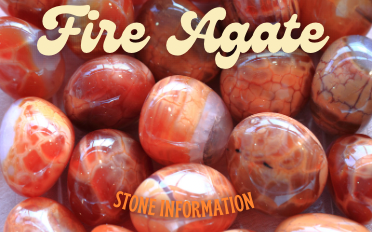Fire Agate | Stone Information, Healing Properties, Uses All Entries

Fire Agate undergoes a fascinating series of geological processes to attain its remarkable form and captivating characteristics. This variety of chalcedony, belonging to the quartz family, owes its existence to the interplay of volcanic activity and the intricate workings of nature.
The genesis of Fire Agate can be traced back to regions where volcanic ash and lava once surged through the Earth's crust. During these volcanic events, the searing hot lava, along with the accompanying ash, flowed into cavities and fractures within the surrounding rocks. As the lava cooled and solidified over an extended period, it created a host rock, encapsulating the potential for Fire Agate formation within its confines.
Within the cavities and cracks of this host rock, a process known as opalization took place. Opalization involves the replacement of the original material with layers of silica, a process akin to the formation of opal gemstones. Over time, groundwater rich in dissolved silica infiltrated the spaces within the rock, depositing thin layers of silica gel. These layers gradually solidified, gradually transforming into the intricate and vibrant structure that characterizes Fire Agate.
The opalization process itself is influenced by several factors, including the composition of the surrounding rock, the temperature, and the chemical composition of the infiltrating groundwater. These variables play a crucial role in determining the specific colors and patterns that manifest within Fire Agate. The interplay of silica deposition, mineral impurities, and the presence of iron oxide or manganese oxide result in the fiery hues, iridescence, and distinct play of colors that make Fire Agate so visually captivating.
While each Fire Agate specimen is unique, the general process of formation involves the fusion of volcanic activity, the cooling and solidification of lava, and the subsequent opalization process within cavities and fractures. This intricate interplay of geological events and the slow deposition of silica layers give rise to the mesmerizing beauty and enchanting metaphysical properties that have made Fire Agate highly sought after by collectors, jewelry artisans, and spiritual practitioners alike.
Do not use crystal healing in place of your medicine/healthcare.



